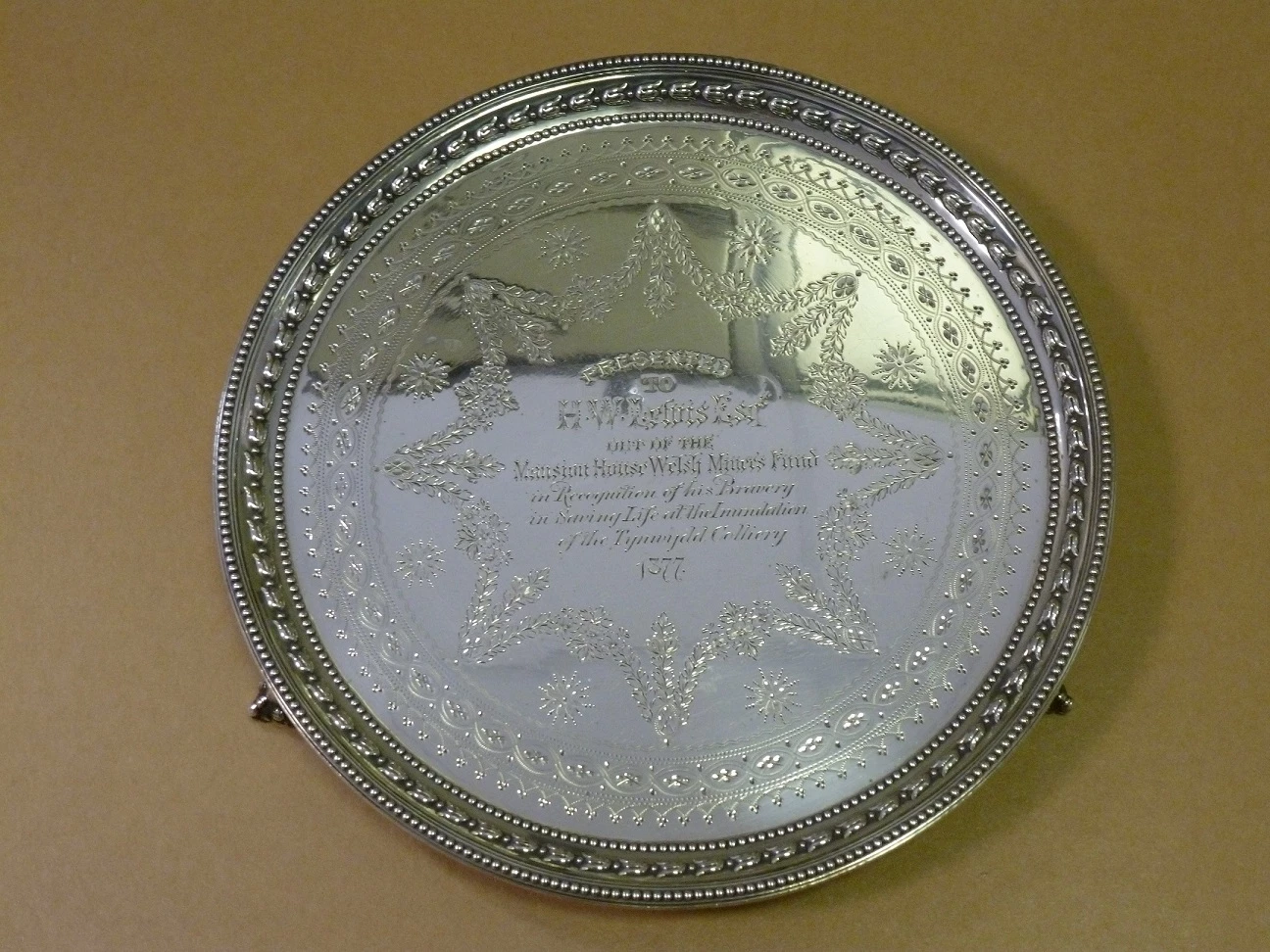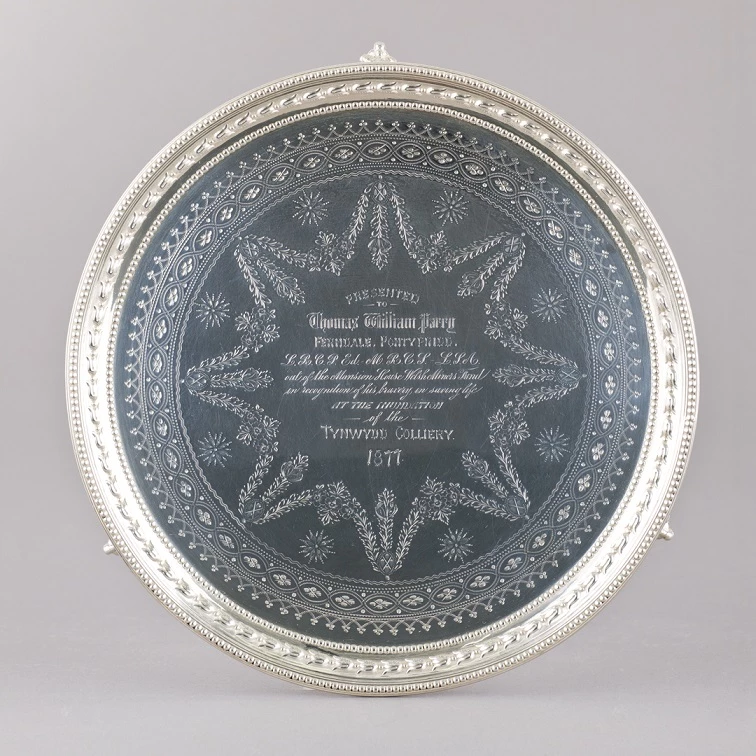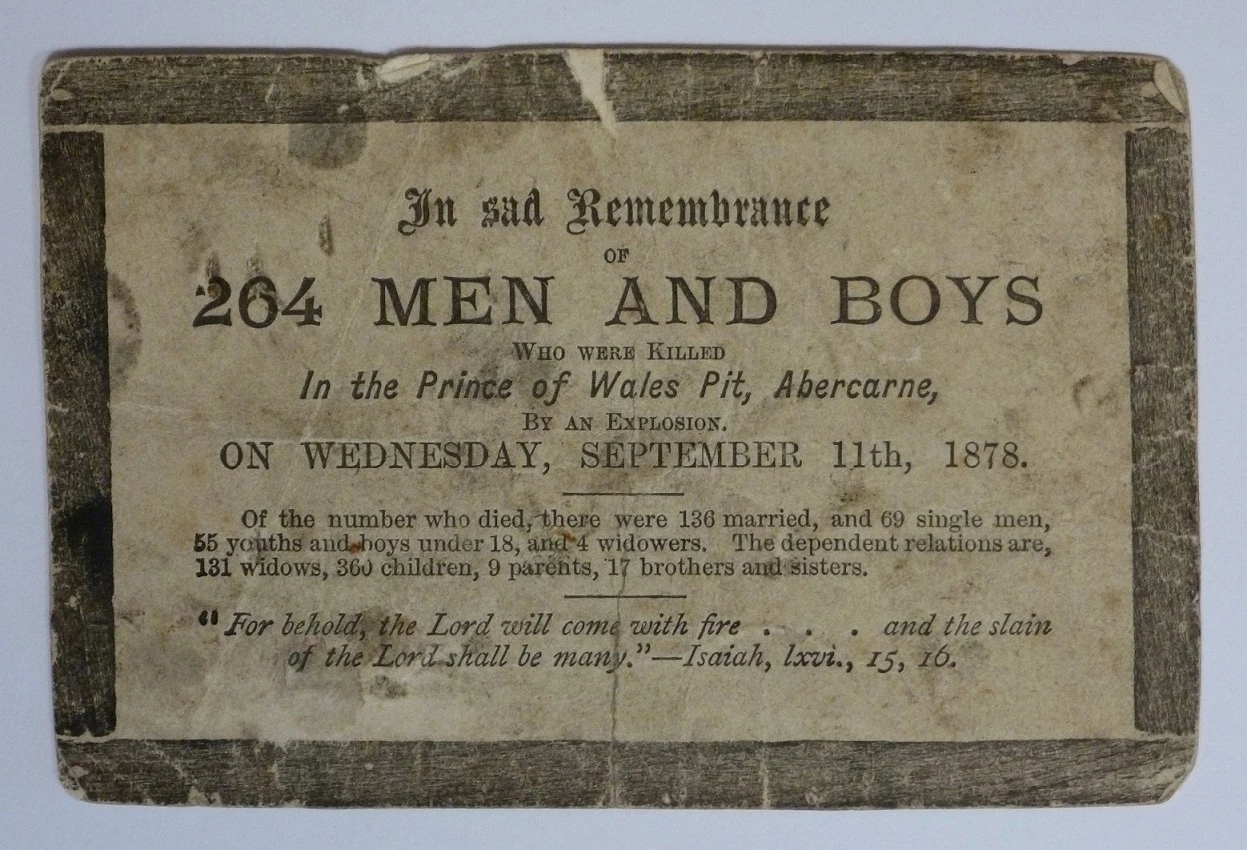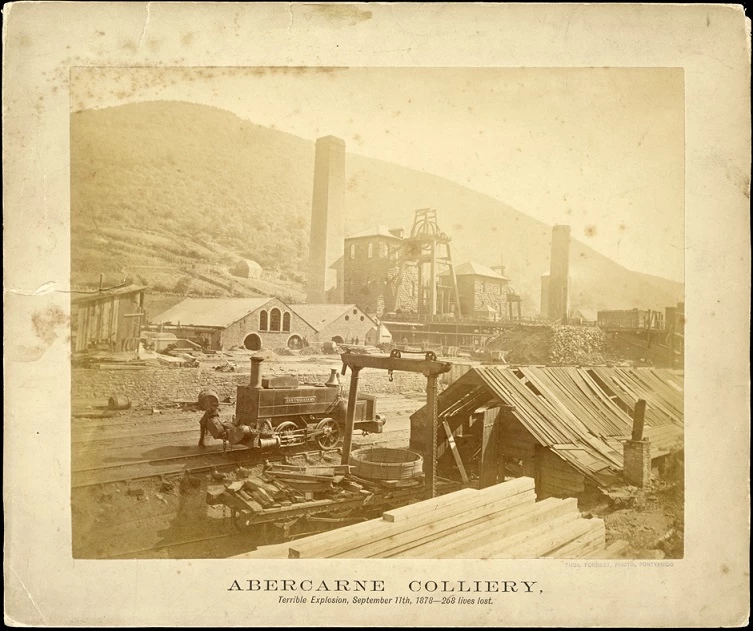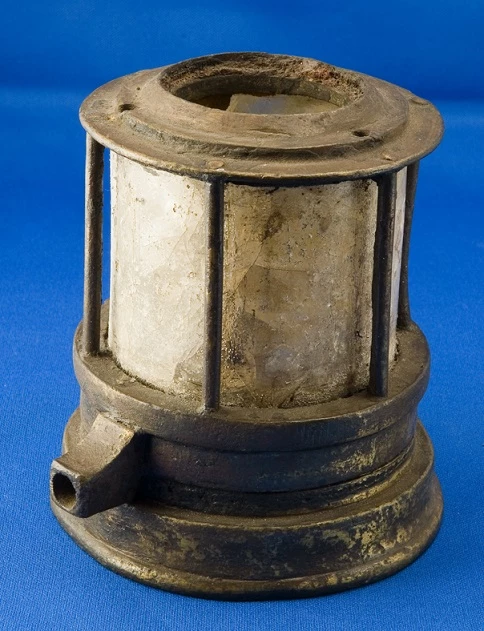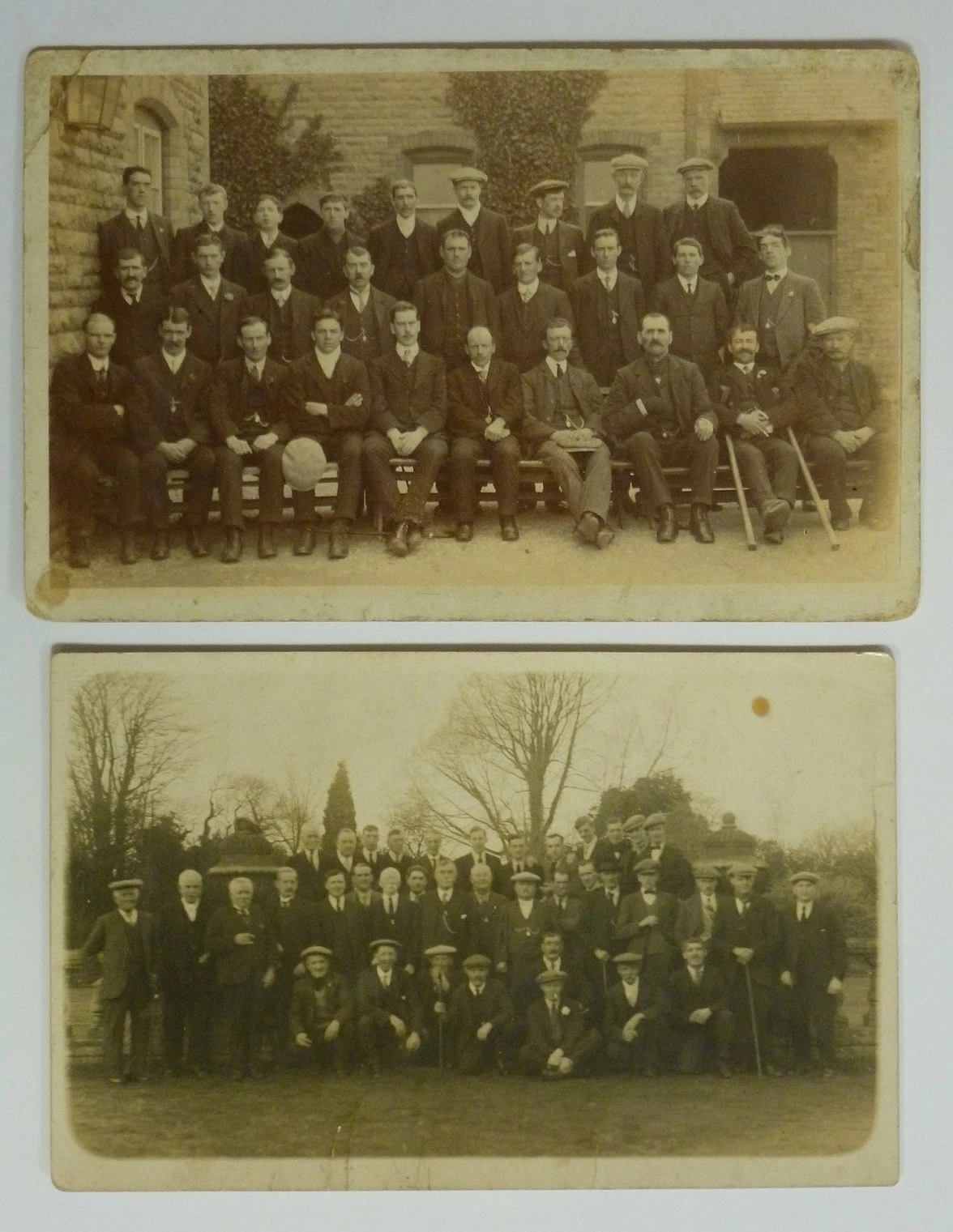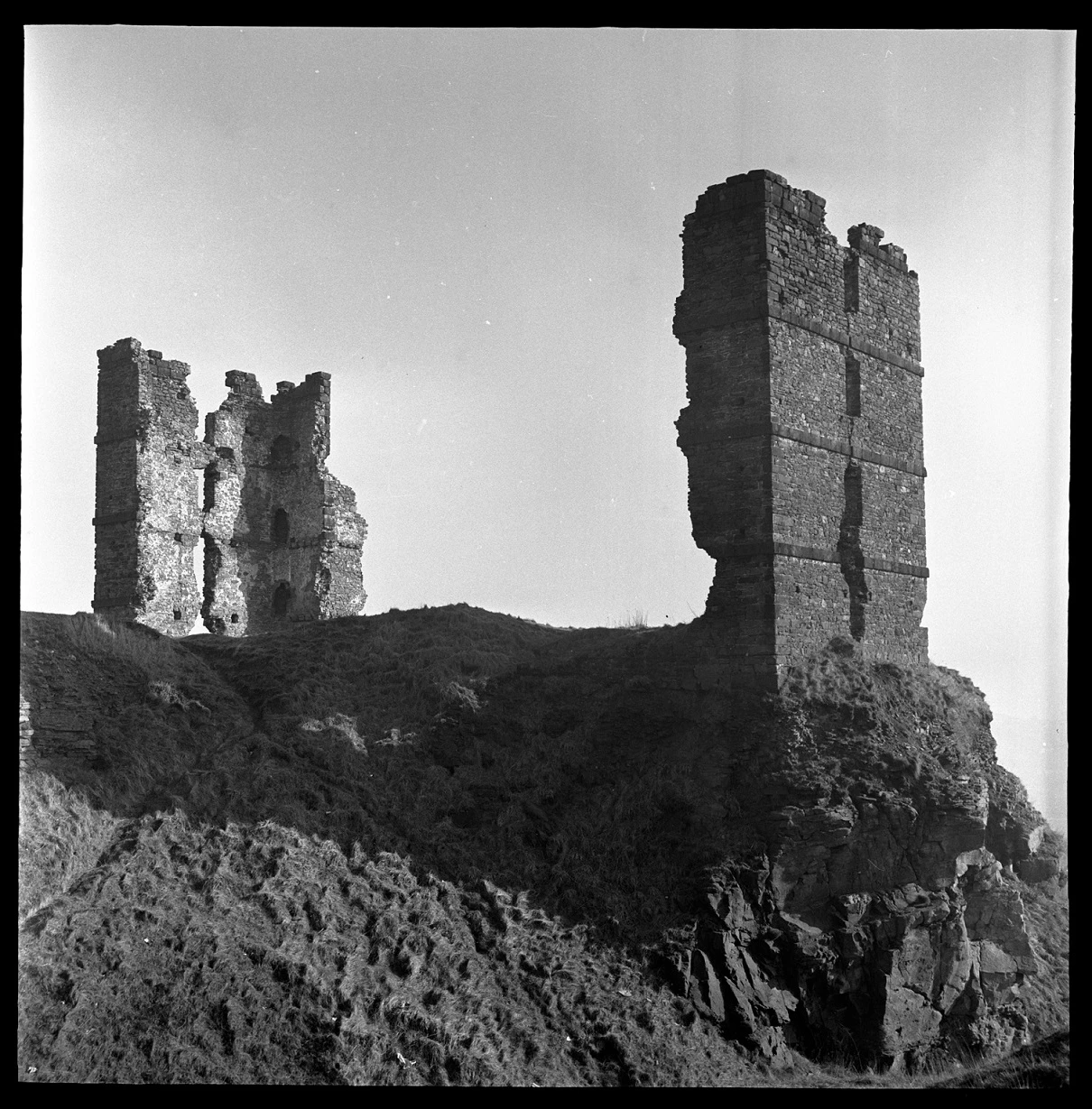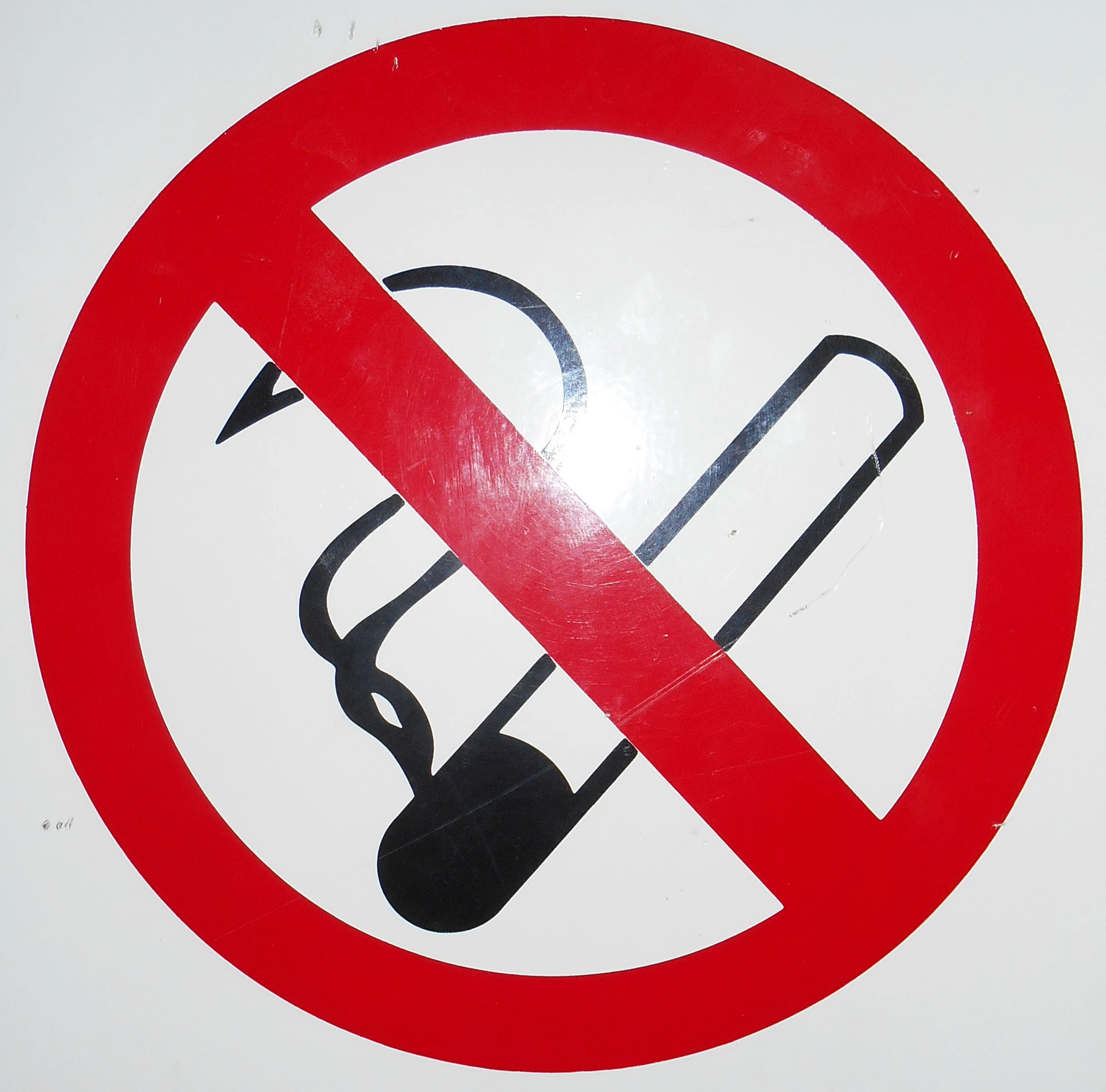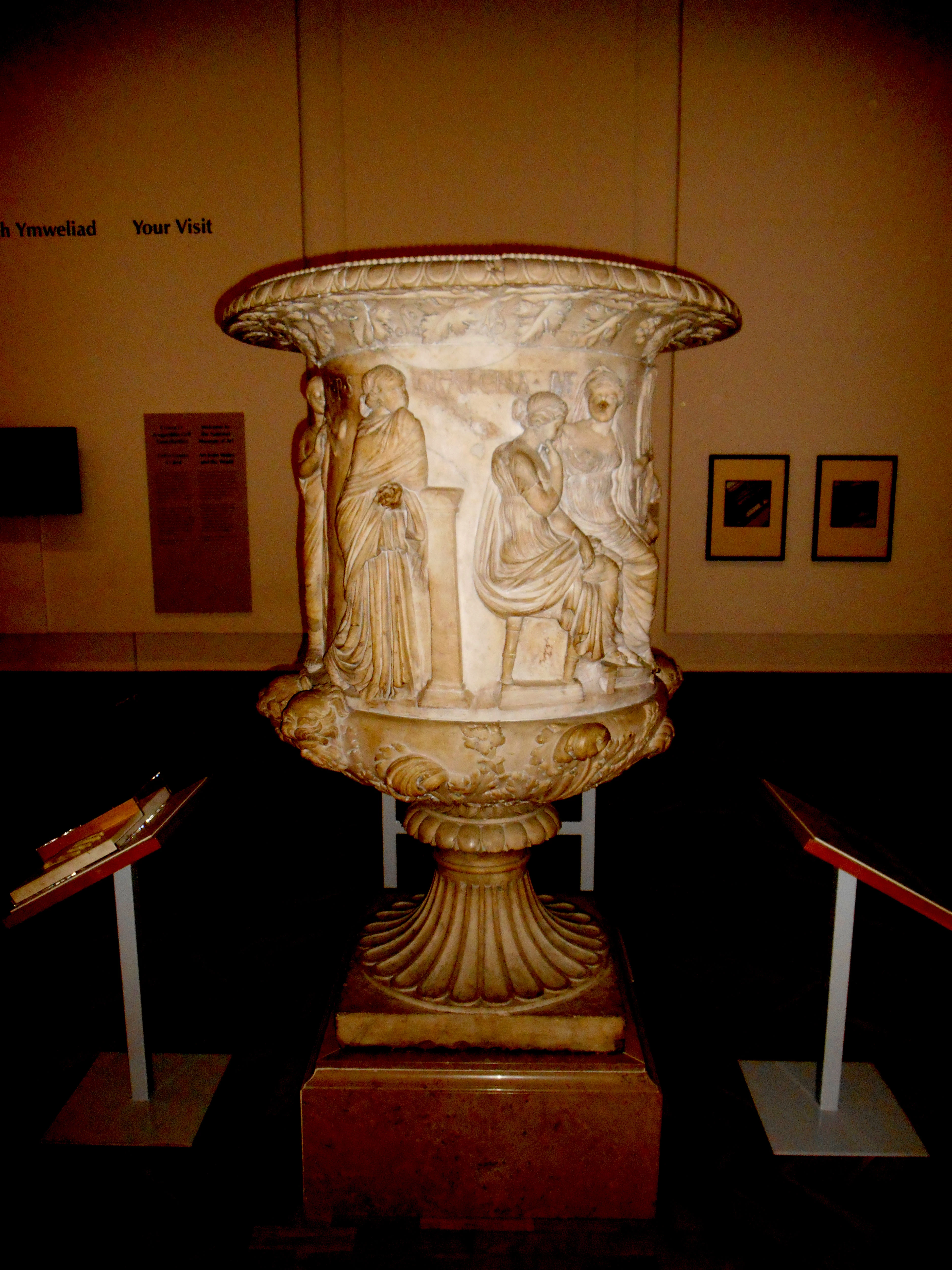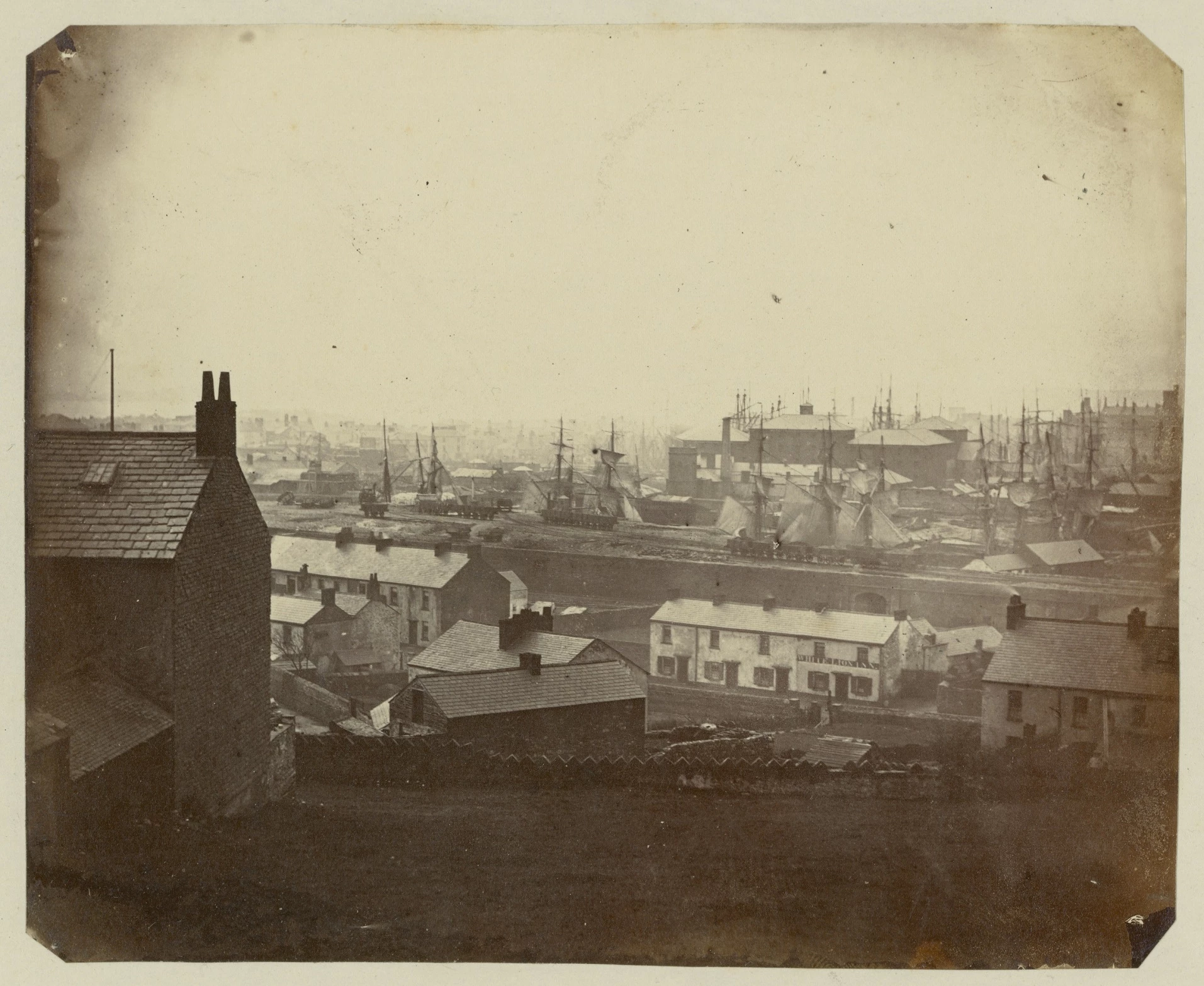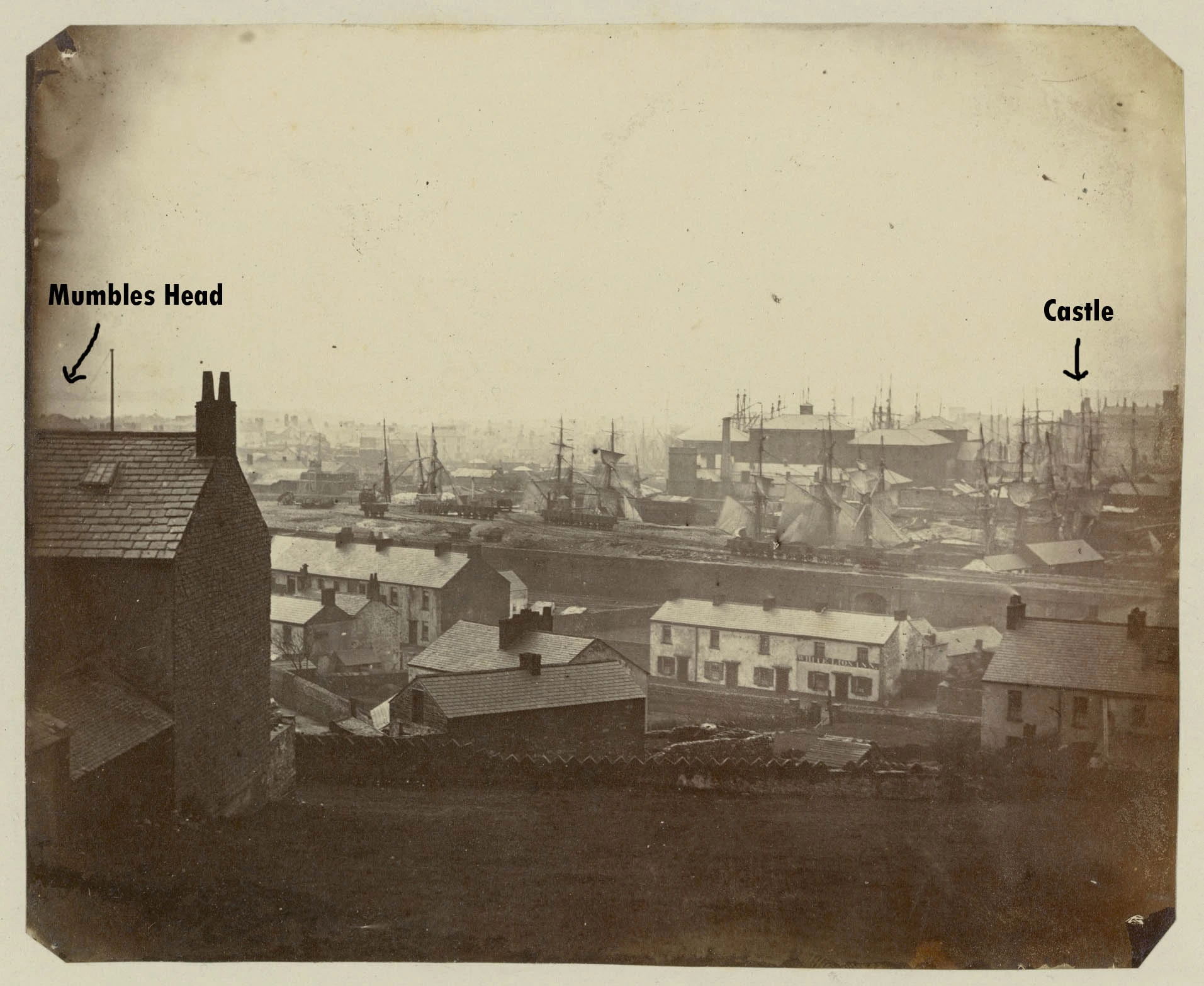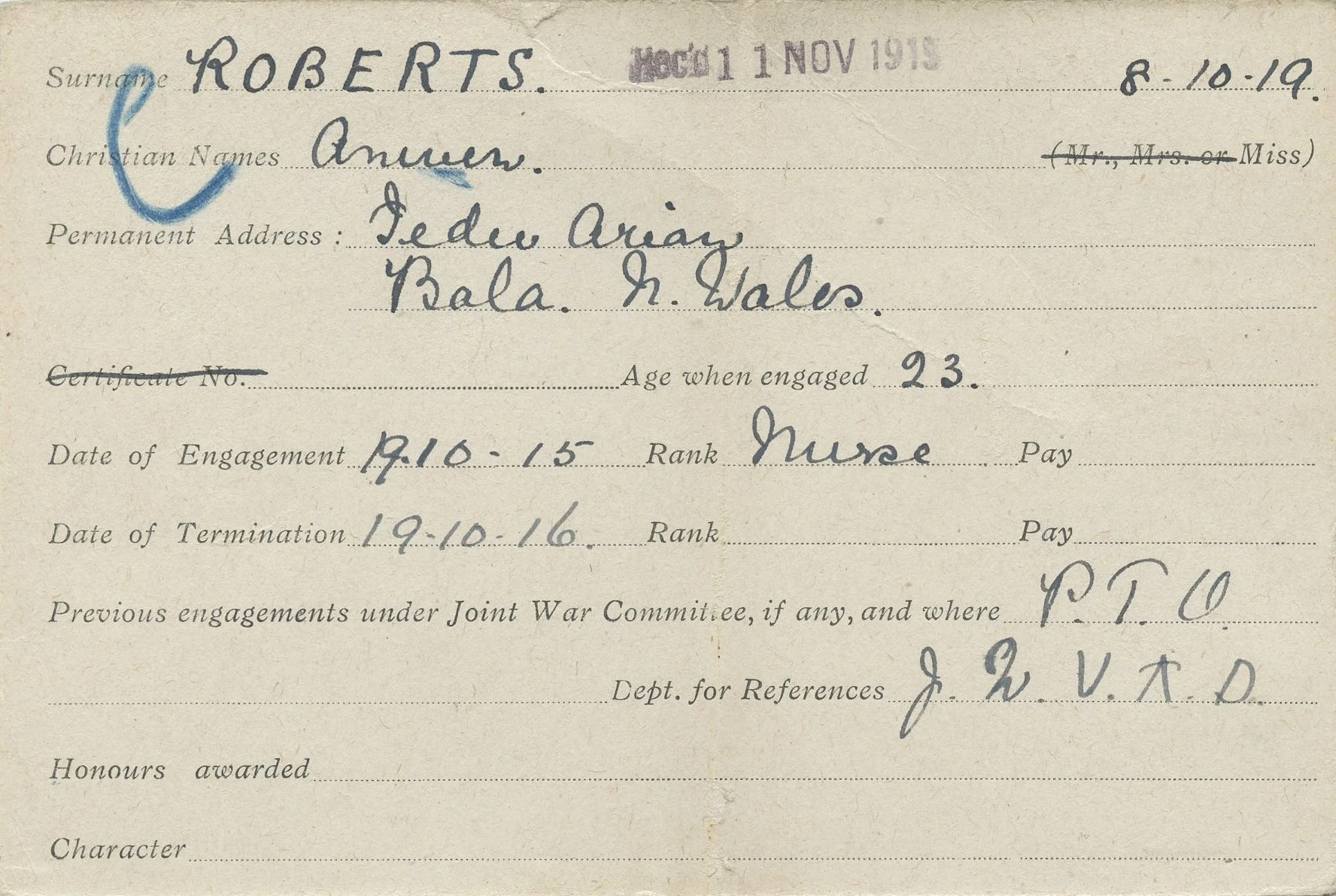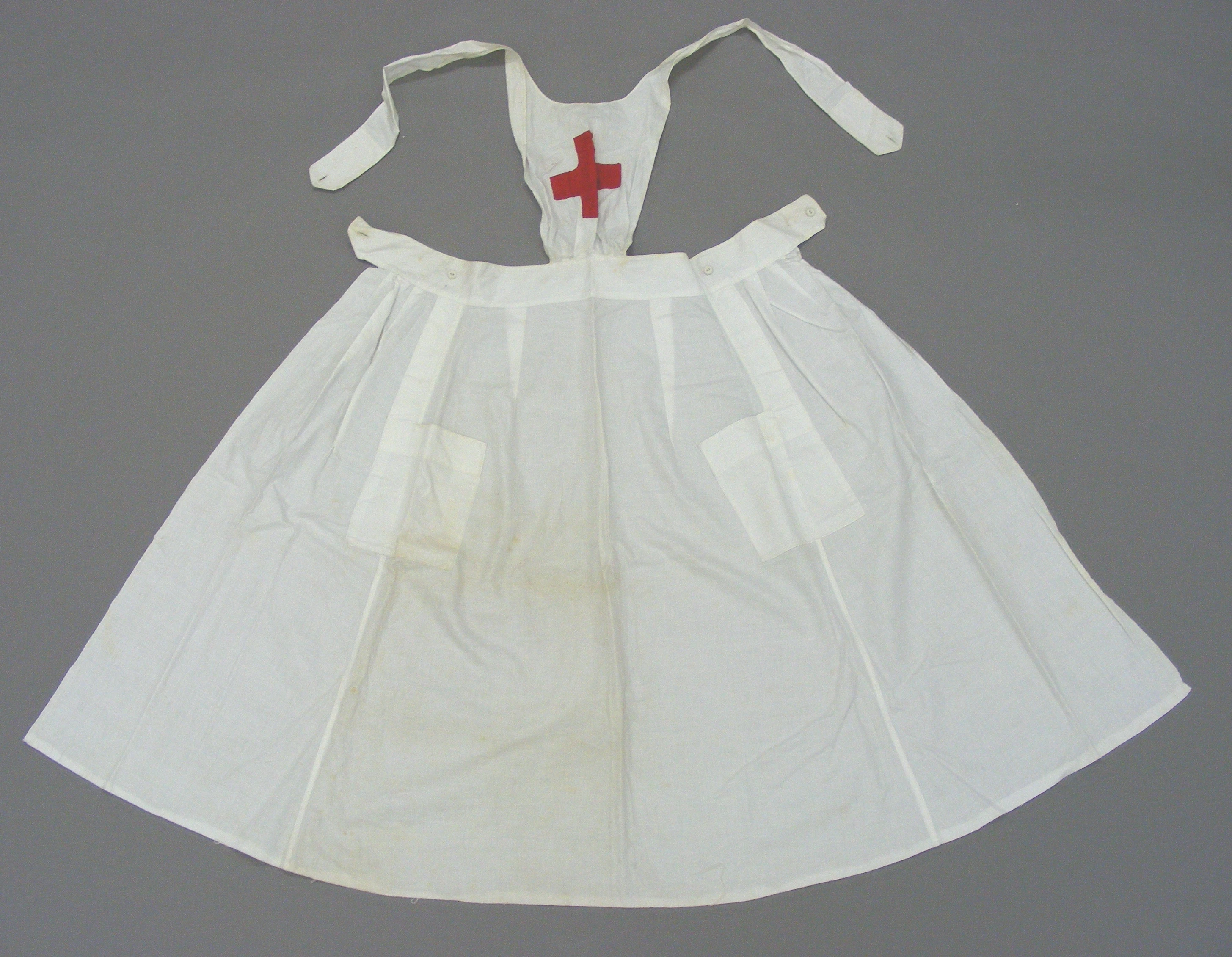A Window into the Industry Collections - July 2015
, 30 Gorffennaf 2015
In July we were very fortunate to acquire this silver salver/tray. It was presented to H.W. Lewis for his heroism during the Tynewydd Colliery inundation. Henry Lewis was the Manager of Energlyn Colliery (near Caerphilly), and he was also awarded the Albert Medal, 2nd Class for his bravery during the same disaster. The disaster occurred on the 11th April 1877 and further information can be found in this article. A collection of objects relating to the Tynewydd inundation, can be seen in a display on coal mining disasters at Big Pit: National Mining Museum.
Amgueddfa Cymru has another very similar tray in the collection presented to Thomas William Parry. Both trays were manufactured by Henry Holland (of Holland, Aldwinckle & Slater) of London.
Recently donated, this memorial card was produced "In sad Remembrance of 264 men and boys who were killed in the Prince of Wales Pit, Abercarne, by an explosion, on Wednesday, September 11th, 1878."
The underground fires caused by this massive explosion resulted in the deaths of at least 264 people although the exact death toll is not known. To put out the fire the difficult decision was made to flood the mine with water from the Monmouthshire Canal. It took two months and 35 million gallons of water to put out the fire. This water had to then be pumped out before the victims could be recovered. The photograph below was taken by Thomas Forrest of Pontypridd around the time of the disaster in 1878.
This Clanny flame safety lamp was destroyed during the explosion of 11th September 1878. A very emotional reminder of the disaster, it would have belonged to one of the victims. The glass shield has cracked and melted in the heat. This objects has been part of the collections since 1936.
Talygarn House, Pontyclun, South Wales, was a large stone mansion that became a hospital in 1880. In October 1923, it was opened as a miners' convalescent home and in the first 15 years of its opening had more than 41,000 patients. The house was eventually put up for sale in 2000, and has recently been converted into luxury homes. You can read more about Talygarn in this article. The two photographs below were donated this month and show miners at Talygarn.
Morris Castle was built between 1768 and 1774 to house the families of workers employed by Sir John Morris (mainly at his Landore copper works). It is on an elevated position overlooking the surrounding area. It originally comprised of four towers, each four stories tall, connected by blocks three stories tall, around a central courtyard. Both the towers and linking walls were crowned with mock battlements made from copper slag. The building was occupied until about 1850. It is now just a ruin, owned by Swansea City Council and is a listed monument. These photographs were taken in March 1969, and have been added to the collection this month.
Mark Etheridge
Curator: Industry & Transport
Follow us on Twitter - @IndustryACNMW
